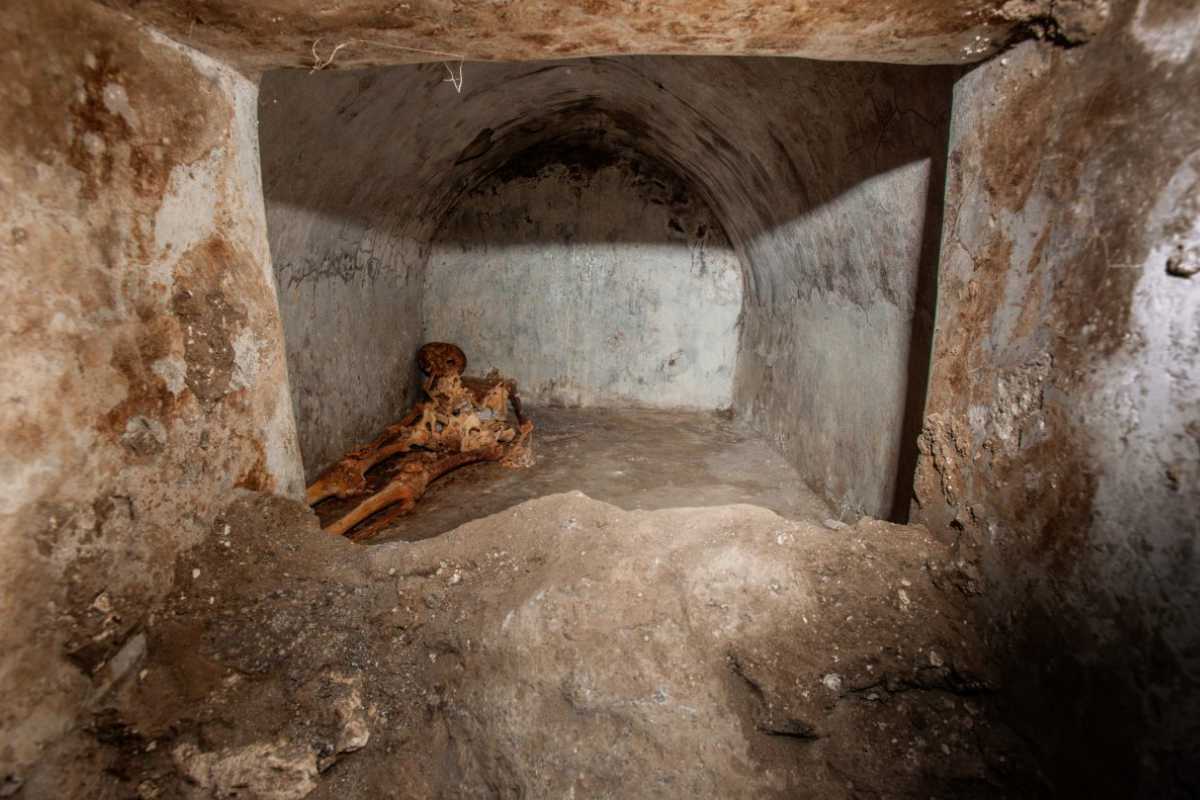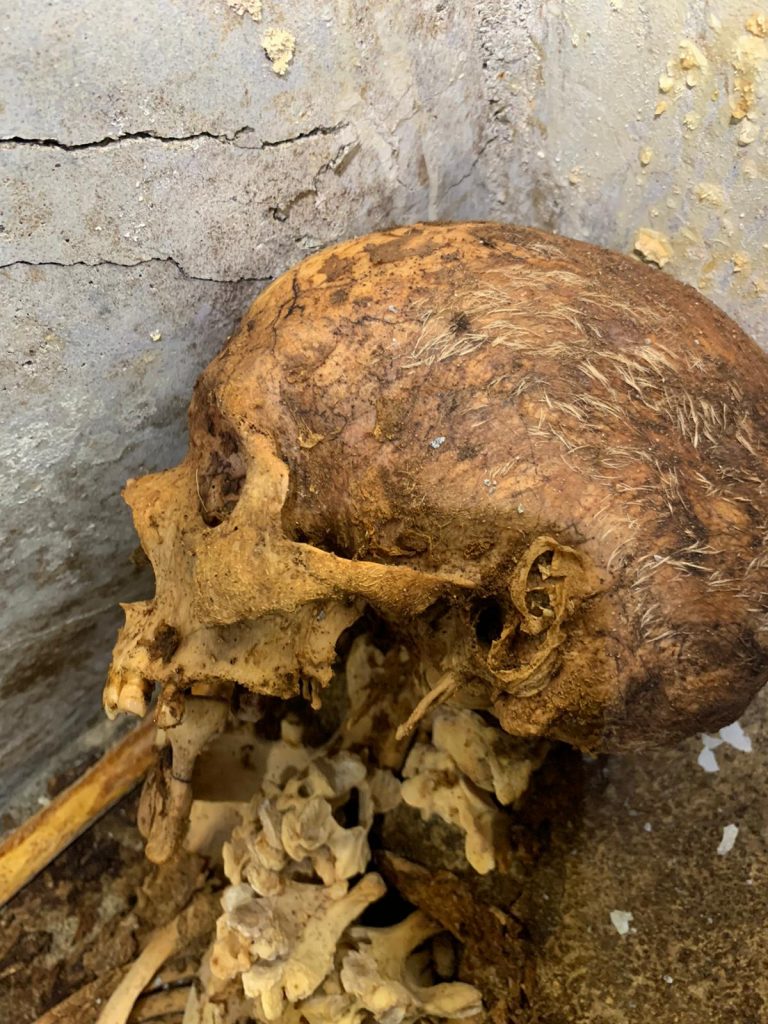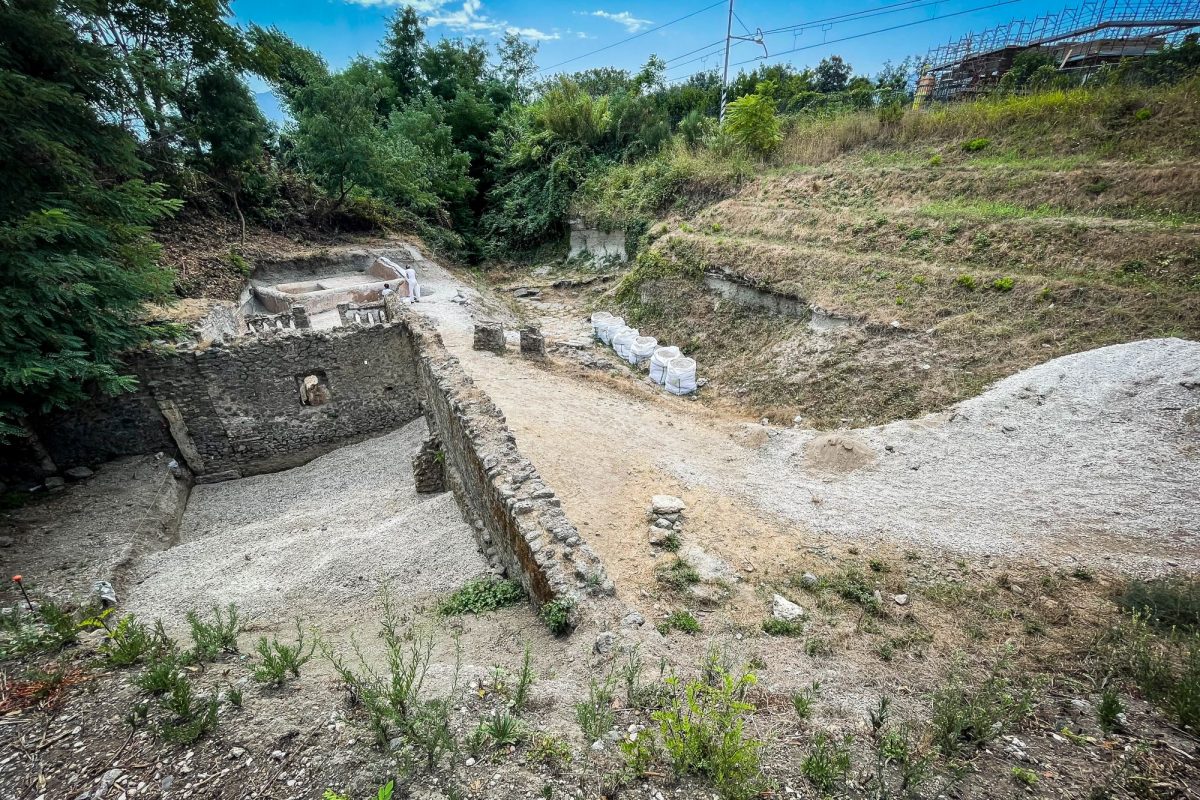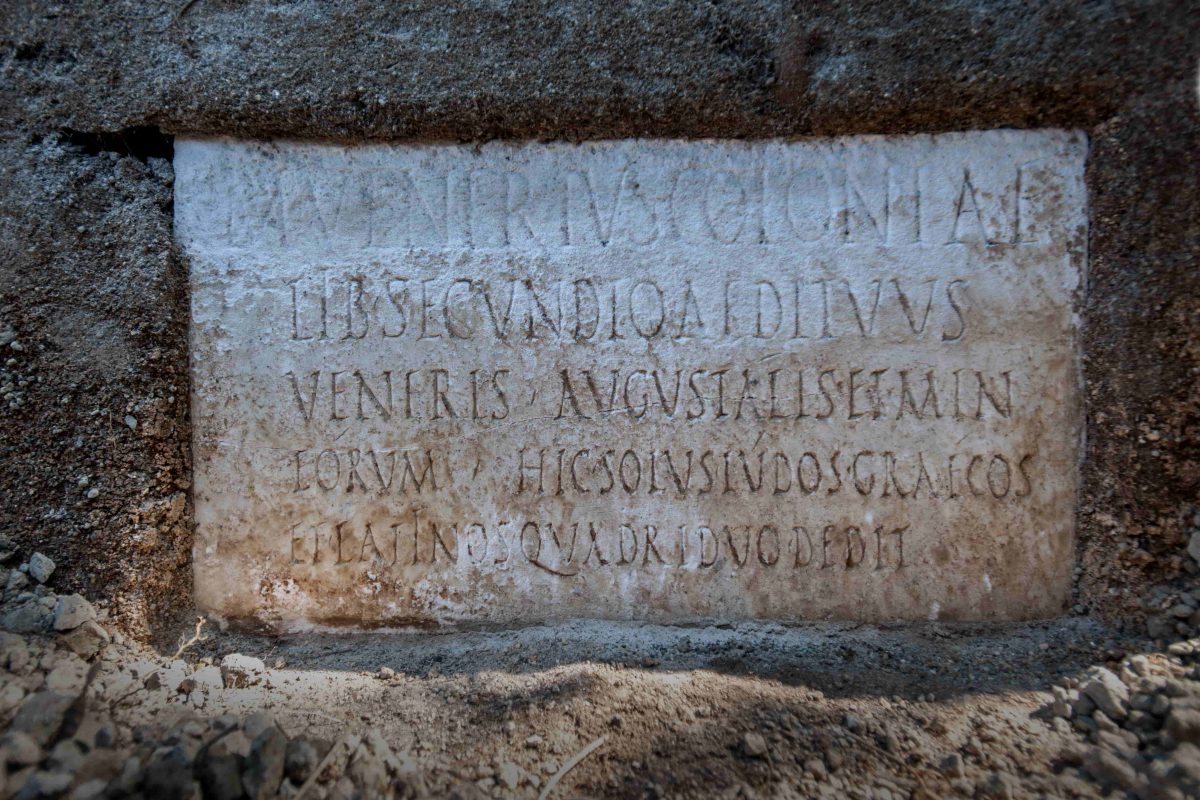
Even tufts of hair and parts of the ear have stood the test of time.
“Pompeii continues to amaze,” said Dario Franceschini, Italy’s culture minister. And there is indeed nothing wrong with that. Archaeologists have stumbled upon exceptionally well-preserved human remains in the famous ancient Roman city. The remains appear to belong to a freed slave, who apparently was not cremated – like most of his contemporaries – but buried.
freed slave
Archaeologists found the mummified remains in an ancient tomb east of Pompeii’s ancient urban center. The name ‘Marcus Venerius Secundio’ can be read on a marble slab fixed to the facade. This man was a former slave, who enjoyed a certain social and economic status after his liberation, the researchers conclude from the rather monumental grave and a written commemorative inscription.
Exceptional condition
But what is particularly special is the extraordinary condition of the remains. It is one of the best-preserved skeletons ever discovered in Pompeii. The man was about sixty years old when he died and was laid to rest in a small cell measuring 1.6 x 2.4 meters. Due to this hermetically sealed space, the skeleton has been exceptionally well preserved. Even tufts of hair and parts of the ear have stood the test of time.

In this photo the tufts of hair and parts of the ear are clearly distinguishable. Image: Pompeii Archeological Park
It is also very remarkable that the freed slave was found in a grave. During the Roman period, most people in Pompeii were cremated. Only small children were buried. It is therefore highly unusual that Marcus Venerius, a man of about sixty, was given a funeral.
The grave
The tomb dates from the last decades of the city’s life and consists of a masonry fence, with traces of paint. Researchers managed to distinguish green plants on a blue background. In addition, grave goods have been found, including two small bottles and numerous pieces of what appears to be dust. A glass urn belonging to a woman named Novia Amabilis was also found in the tomb.

The grave. Image: Pompeii Archeological Park
Performances in Greek
The commemorative inscription also reads that the man “gave performances in both Greek and Latin for four days.” And that is also very special. “It is the first clear evidence of Greek-language performances in Pompeii,” said Gabriel Zuchtriegel, director of the Pompeii Archaeological Park. “Previously, there were only indirect indications for this. But now we have found an inscription mentioning Greek, the then lingua franca of the Eastern Mediterranean, alongside Latin. Hosting performances in Greek is testament to the vibrant and open cultural climate that characterized ancient Pompeii.”

Commemorative inscription found at the tomb of Marcus Venerius. Image: Pompeii Archeological Park
Intentional or not?
Researchers can’t wait to study the grave further. Because there are still many questions that archaeologists hope to answer. “For example, we still need to understand whether the partial mummification of the deceased is intentional or not,” explains Professor Llorenç Alapont. “Analysis of the found substance could provide more insight into this.”
But there is no doubt that this grave is a spectacular find. “Even for someone like me, who has specialized in funerary archaeology for some time, the extraordinary wealth of information this tomb offers – from the inscription to the grave goods and the painted facade – is exceptional,” Alapont points out. The human remains have since been transferred to a laboratory, where they will be further analyzed and studied.
Source material:
“The tomb of Marcus Venerius Secundio discovered at Porta Sarno with mummified human remains” – Pompeii Archeological Park
Image at the top of this article: